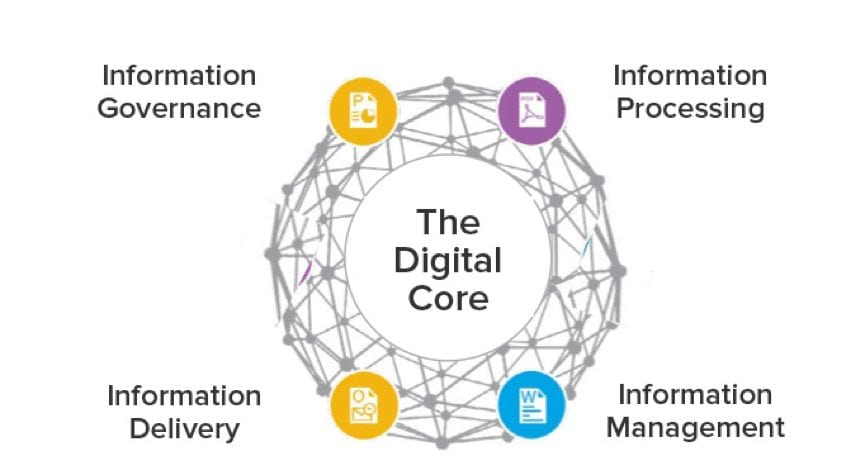As we embark on our Innovation Tour 2018, I’m reminded of a prediction from Gartner. In 2015, the firm suggested that 80% of processes and products will be reinvented, digitized or eliminated by 2020. It feels like we’re well on the way to proving Gartner right. I think the challenge is bigger for the Utilities industry than for some others and, like everything else, where the challenges are bigger so are the rewards. This blog sets out a little of what I’ll be talking about during the Innovation Tour.
I really don’t think that anybody is underestimating the size of the challenge facing major Utility companies. You need to get the most out of your massive and, in many cases, aging infrastructure. At the same time, you have to deal with changing demand patterns and customers who want more and aren’t afraid to switch in order to get it. In fact, the forthcoming General Data Protection Regulation (GDPR) in Europe will make it easier still for customers to change suppliers. GDPR sets out the right of data portability that lets the individual request that their personal data be transferred between providers.
Balancing supply with demand
A survey of UK utility companies we conducted with IDC in 2016 suggested that one of the key objectives of digital transformation was to better balance supply and demand. At the moment, utilities tend to generate energy to meet peak demand at all times, wasting resources and costs. This is unsustainable at a time of shrinking demand and declining revenues.
Staying in the UK, we can chart an alarming change in customer loyalty. During 2017, over 5 million UK domestic customers switched supplier. To give you some context, that figure represents over a quarter of all domestic customers. Customers don’t just switch for cheaper tariffs – although that is a major concern – they also change for the quality of service and the innovative products available.
Digital transformation is urgently required if companies really are to balance supply with demand – to increase the efficiency of their production while driving innovation in their customer experience. The growth of the Digital Energy Network will undoubtedly foster new business models and processes, new customer demands, and new ways of working in a competitive and changing environment.
The Utility companies that can thrive in this environment will be the ones who can take greater control of their data and information – both structured and unstructured – and turn it into real value for the business. At the heart of this sits a digital platform – something that OpenText™ and our partner SAP are calling ‘the Digital Core.’
Defining the Digital Core
Creating data is not a problem for the Utilities industry. Making sense of that data is another thing entirely. Our Big Data is getting bigger by the day. The systems we have need to move beyond the management and control of data to enable the full analysis and exploitation of all data that you need to operate. We’re all aware that we hold less and less of that data ourselves and we need to be able to work with data from suppliers, regulators, customers and social channels.

Managing and capitalizing on the enterprise information you have is the key to simpler workflows, better decisions, more engaged customers, enhanced innovation and faster results. I think you’ll understand that this means a lot more than simply overcoming departmental and enterprise silos to gain centralized control of information. It requires a completely holistic approach to how you work with, share and collaborate on information.
That’s what we mean by the Digital Core. It is comprised of four important elements:
- Information Processing: Automating the capture, digitization, and processing of information coming into your business processes from enterprise applications, customers, suppliers, and other stakeholders.
- Information Management: Storing, integrating and analyzing the information assets required for business processes so that information flows to the right user, in the right format at the right time.
- Information Delivery: Aggregating information from different sources, and publishing it to target groups in a personalized way in real time. This provides the platform for collaboration and sharing across devices and applications.
- Information Governance: Maintaining all relevant information for the legally required compliance periods. This underpins all stages of the flow of enterprise information across your organization.
The Digital Core acts as an enterprise architecture to connect people, processes, and the critical information through every stage of the information flow. Find out more by reading our white paper, Digital Simplified.
The Digital Core: Three use cases
There are many business areas where implementing a Digital Core can begin to bring operational, productivity and customer experience benefits. As I will be presenting some of this in my presentation on the Innovation Tour in London on April 12 this year and I hope you can join me there, I’ll very briefly mention just three.
Optimize enterprise asset management
You can maintain, repair and operate your fleets, plants and distribution networks more efficiently. Extend your ERP and EAM systems to deliver collaboration, information governance and process control to operations and maintenance activities. Benefits include:
- Increase asset uptime and reliability
- 360-degree view of asset information, process and master data
- Improve quality and consistency of asset information and work instructions
- Reduce HSE risks and incidents
- Transparent compliance and effective management of change (MoC)
- Support external service providers and maintenance workers
- Move from reactive to predictive maintenance
Deliver a more engaging customer experience
You can empower your marketing, sales and support teams to improve the customer experience and increase your share of the customer wallet with tailored, multi-channel communications. Benefits include:
- Deliver high-volume personalized customer billing and communications
- Tailor communications based on customer information and energy profiles
- Support marketing and demand-side management programs
- Deliver consistent corporate branding and message
- Increase customer satisfaction and reduce call center volume
Manage your Smart Grid data efficiently
You can manage the ever-expanding volume and velocity of Big Data from your meter data management (MDM) and demand-side management systems (DMS). Embedded data archiving delivers improved business insight and regulatory compliance. Benefits include:
- Retain customer and network records to support regulatory requirements
- Optimize the reliability and performance of your production systems
- Gain insight into historical operations and performance
- Improve visibility, reporting and compliance
The Digital Core makes it simple to incorporate mobile, cloud, Big Data and AI into content-rich digital processes. It delivers the foundation for successful digital transformation.
If you’d like to find out more about OpenText™ and how we can help you to digitally transform your business, please join us at this year’s Innovation Tour. You won’t just hear from me. There will also be companies like yourself that will be telling their digital transformation stories.




